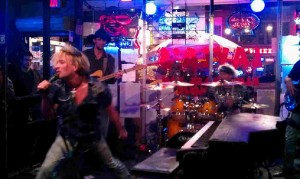No matter what kind of an artist you are – a soloist, a band, a singer/songwriter, a rock group, a Gospel artist, ….. – you have musical colors to paint with. You may have one instrument (like a keyboard or a guitar) or a whole truckload of instruments. You may be one singer alone or a group with five singers. You might use tracks, you might use a live band.

Your unique arrangement of instruments, voices, and recorded sounds, give you a full palette of colors. So, painting with those colors is the goal. And how you mix and match them is only limited by your creativity and the amount of colors you have to work with.
Suppose you’re a keyboard player.



For some reason this article made me think of Sir Paul McCartney. He was/is the worst lead man in the greatest band ever. He was constantly being mocked by John during shows throughout their brief live concert years. I suppose the music made his poor live speaking skills forgivable. Thanks Tom!
Thank you, this was very helpful!
Thanks Tom! Love your blogs.
I sing in small churches, with 1-2 guitars, and often no sound system. I move back and forth across the front of the room, sometimes up the aisle, with a purpose (read and re-read your book), look everyone in the eye for a few seconds multiple times, speak briefly for transitions, and let the songs deliver the message. The cool thing is, sometimes, the audience wants to talk back, to engage in conversation like it’s a Sunday school class. First time it happened, took me by surprise. Takes a lot of courage to join in a conversation, rather than stick to my rehearsed transitions, but it can be a real ‘ministry moment’ or ‘connecting moment’ when it happens. One of the colors on the palette.